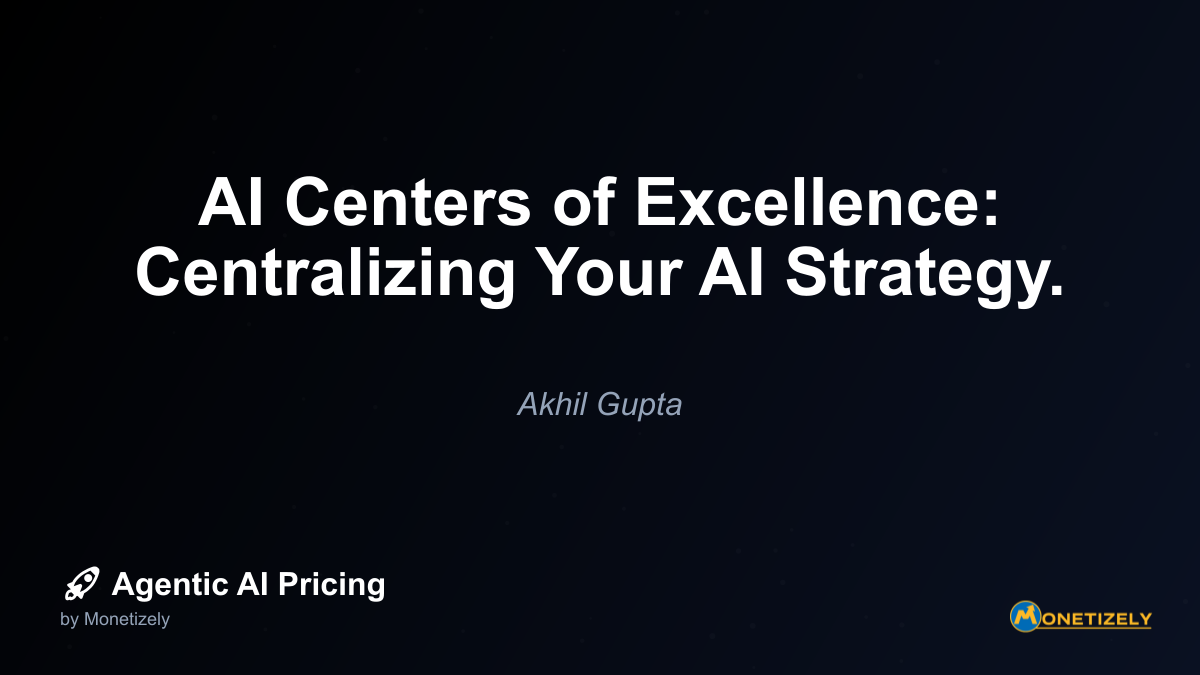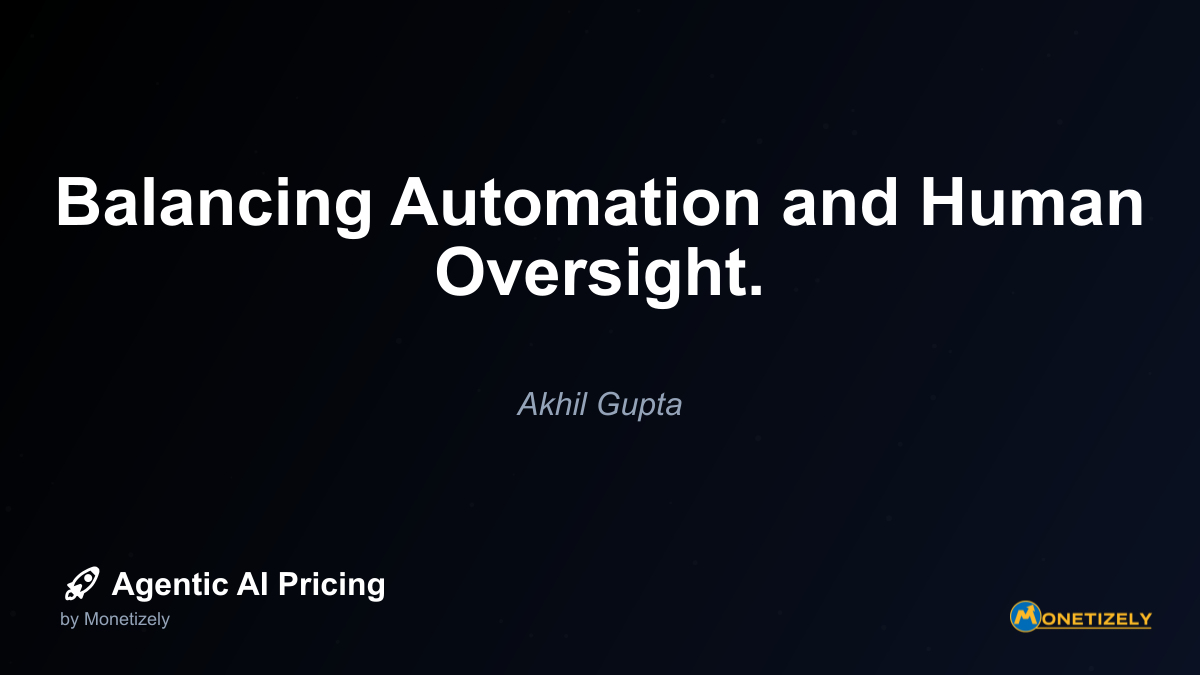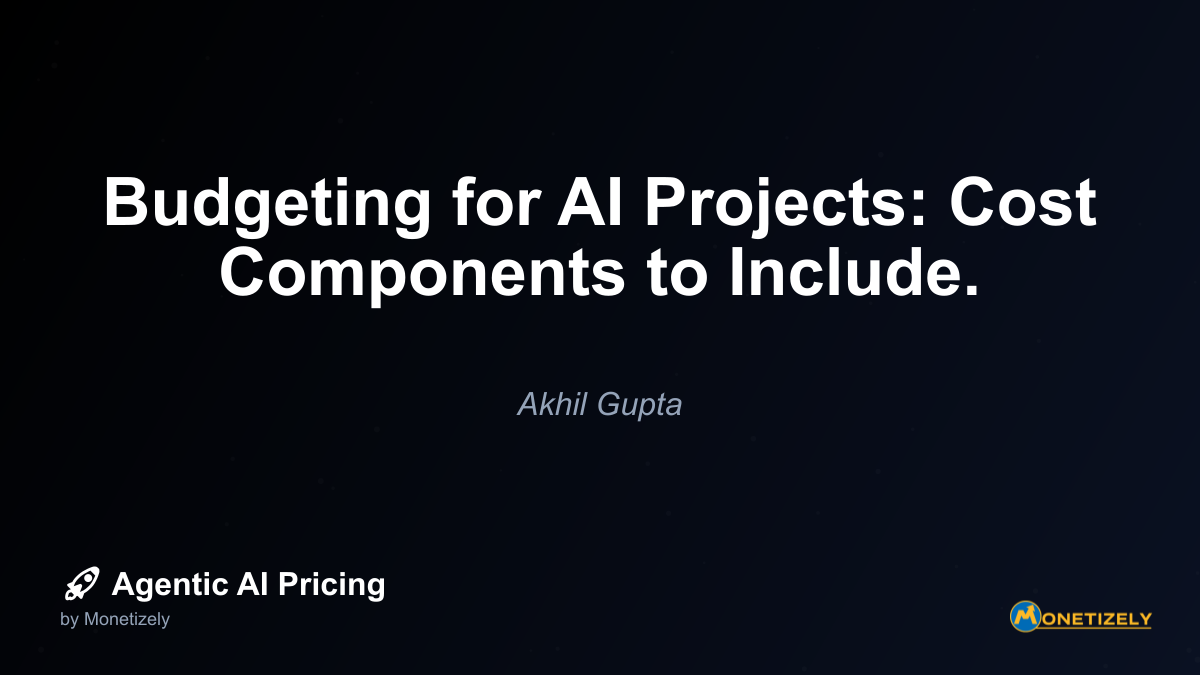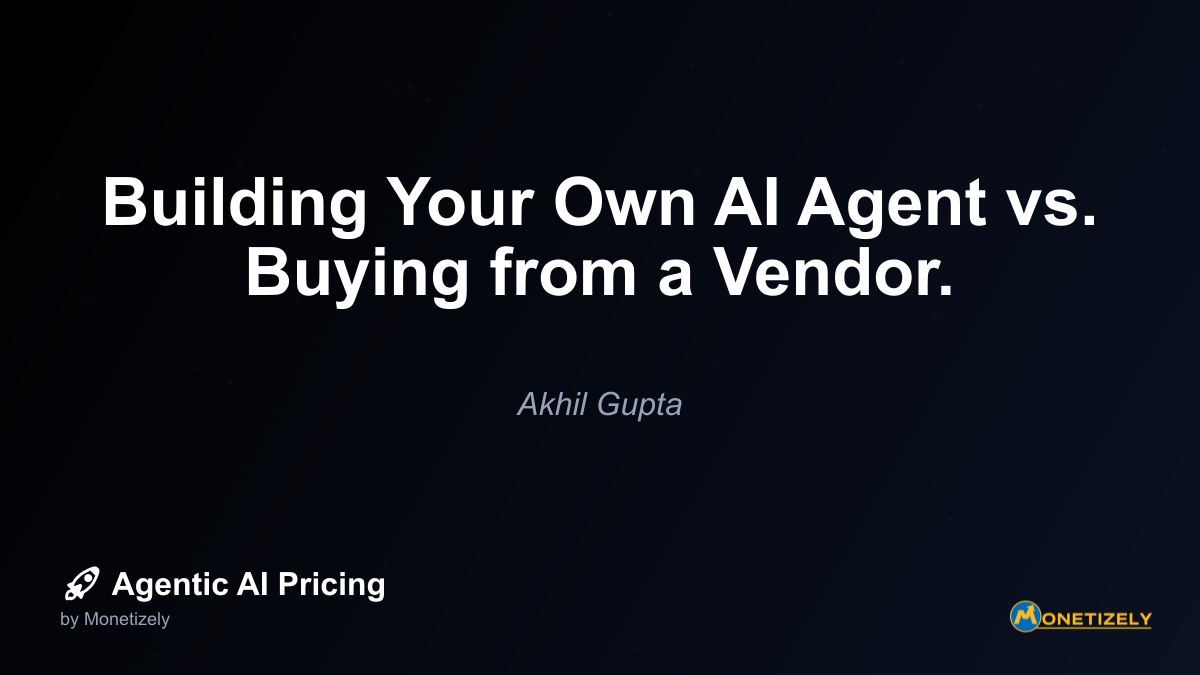· Ajit Ghuman · Implementation Strategies · 5 min read
Managing AI Compute Costs: Tips for Cost Efficiency.
AI and SaaS Pricing Masterclass
Learn the art of strategic pricing directly from industry experts. Our comprehensive course provides frameworks and methodologies for optimizing your pricing strategy in the evolving AI landscape. Earn a professional certification that can be imported directly to your LinkedIn profile.
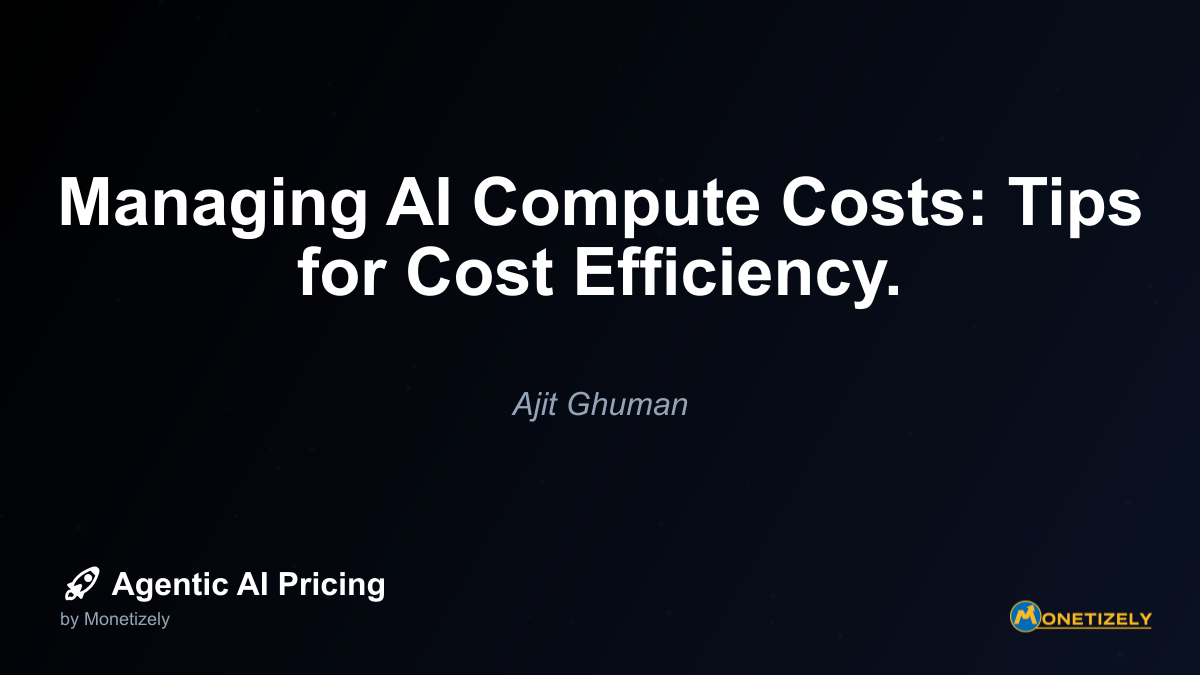
Implementing Cost Monitoring and Governance
Without proper visibility into AI compute usage and spending, even the most well-designed systems can experience cost overruns. Implementing robust monitoring and governance is essential for sustainable AI operations.
Comprehensive Cost Monitoring
Implement tagging strategies: Develop a consistent tagging taxonomy for all AI-related resources to enable accurate cost allocation and analysis. Important dimensions include:
- Project/initiative
- Environment (development, testing, production)
- Model version
- Business unit or cost center
- Specific AI function (training, inference, data processing)
Set up cost anomaly detection: Configure alerts for unusual spending patterns that might indicate inefficiencies or issues. Modern cloud platforms offer built-in anomaly detection for this purpose.
Create dashboards for visibility: Develop comprehensive dashboards that correlate business metrics (requests served, accuracy achieved) with cost metrics to evaluate the return on AI investments.
Track cost per prediction: Monitor the unit economics of your AI system by calculating the average cost per prediction or transaction, which provides a consistent metric even as usage scales.
Budget Controls and Guardrails
Implement hard spending limits: Configure maximum spending thresholds with automatic actions when approached, such as scaling down non-critical workloads or notifying administrators.
Set up approval workflows: Require explicit approval for resources that exceed certain cost thresholds, particularly for experimental or development environments.
Implement resource quotas: Establish limits on the quantity and types of resources that can be provisioned by different teams or for different projects.
Create cost-aware CI/CD pipelines: Incorporate cost estimation into your development workflows to identify potential issues before deployment.
Continuous Optimization Processes
Schedule regular cost reviews: Establish a cadence for reviewing AI compute costs and identifying optimization opportunities.
Leverage cloud provider recommendations: Most major cloud providers offer automated cost optimization recommendations based on your usage patterns.
Implement a FinOps approach: Adopt financial operations practices specifically for AI workloads, making cost optimization a shared responsibility across development, operations, and finance teams.
Advanced Cost Optimization Techniques
For organizations with mature AI operations, several advanced techniques can further improve cost efficiency.
Multi-cloud and Hybrid Strategies
Leverage spot market arbitrage: Deploy workloads to the cloud provider offering the most favorable spot instance pricing at any given time.
Implement cloud-agnostic architectures: Design systems that can run on multiple cloud platforms to maintain negotiating leverage and take advantage of competitive pricing.
Consider specialized AI cloud providers: Evaluate purpose-built AI infrastructure providers that may offer better economics for specific workloads compared to general-purpose cloud platforms.
Hardware Acceleration Optimization
Explore FPGA acceleration: For specific, well-defined inference workloads, Field Programmable Gate Arrays can offer superior performance-per-watt compared to GPUs.
Consider ASICs for production workloads: For stable, high-volume AI applications, Application-Specific Integrated Circuits like Google’s TPUs can deliver exceptional efficiency.
Evaluate emerging AI accelerators: The landscape of AI-specific hardware is evolving rapidly, with new options regularly emerging that may offer better economics for particular workloads.
Algorithmic Efficiency Improvements
Invest in model efficiency research: Allocate resources to improving the algorithmic efficiency of your models, as these improvements compound over time and usage volume.
Explore neural architecture search: Automated techniques can discover model architectures that achieve better performance with fewer computational resources.
Consider sparse models: Models that activate only a subset of parameters for each inference can dramatically reduce computational requirements.
Cost Efficiency in the AI Development Lifecycle
Optimizing costs across the entire AI development lifecycle requires different strategies at each stage.
Research and Experimentation
Use simplified environments: Develop initial prototypes using smaller datasets and models to validate concepts before scaling to full-sized implementations.
Implement experiment tracking: Monitor the cost and performance of different approaches to identify the most promising directions quickly.
Time-box exploratory work: Set clear resource and time limits for open-ended research to prevent unbounded exploration.
Model Training and Refinement
Optimize hyperparameter search: Use efficient search algorithms like Bayesian optimization rather than exhaustive grid searches to find optimal model configurations.
Implement distributed training carefully: While distributed training can reduce wall-clock time, it often increases total compute costs due to communication overhead and reduced efficiency.
Consider progressive training approaches: Start with smaller models or datasets and progressively scale up as performance plateaus to avoid wasting resources on suboptimal configurations.
Deployment and Operations
Implement gradual rollouts: Deploy new models to a small percentage of traffic initially to validate performance and resource requirements before full deployment.
Monitor inference latency distributions: Optimize for consistent performance rather than just average latency to improve user experience without overprovisioning.
Implement graceful degradation: Design systems to maintain functionality with reduced capabilities during resource constraints or cost-saving modes.
Balancing Cost Efficiency with AI Performance
While cost optimization is crucial, it must be balanced against the performance and capabilities required by your business objectives. Consider these principles:
Focus on business outcomes: Evaluate cost efficiency in terms of business value delivered rather than absolute spending. A more expensive model that delivers significantly better results may represent better value.
Consider total cost of ownership: Factor in development time, maintenance requirements, and operational complexity when evaluating different approaches.
Prioritize user experience: For customer-facing AI applications, maintain performance thresholds that meet user expectations, as degraded experiences can have hidden costs in customer satisfaction and retention.
Implement progressive enhancement: Design systems that provide basic functionality with efficient models but can seamlessly upgrade to more powerful (and costly) models when needed for complex cases.
Conclusion: Building a Culture of AI Cost Efficiency
Successfully managing AI compute costs requires more than just technical optimizations—it demands organizational alignment and a culture that values efficiency. Organizations that excel at AI cost management typically share these characteristics:
Cross-functional collaboration: Engineering, data science, operations, and finance teams work together with shared visibility into both costs and performance metrics.
Cost-aware development practices: Developers and data scientists consider resource efficiency alongside model performance when designing solutions.
Regular optimization cycles: Teams systematically review and improve cost efficiency rather than addressing it only during budget crises.
Investment in automation: Automated tools for scaling, monitoring, and optimization reduce manual effort and enable consistent application of best practices.
By implementing the strategies outlined in this article, organizations can build AI systems that deliver powerful capabilities while maintaining sustainable cost structures. This balance is particularly critical as AI becomes increasingly central to business operations and competitive advantage.
The journey to AI cost efficiency is continuous, requiring ongoing attention as technologies, pricing models, and business needs evolve. Organizations that develop this capability will be better positioned to scale their AI initiatives effectively and realize the full potential of agentic AI technologies.
Co-Founder & CEO
Ajit is the author of Price To Scale, a top book on SaaS Pricing and is the Founder of Monetizely. Ajit has led and worked in pricing and product marketing at firms like Twilio, Narvar and Medallia. His work has been featured in Forbes and VentureBeat. Ajit regularly consults with software companies from Seed stage to post-IPO on pricing strategy. Ajit is also a highly-rated co-instructor for 'The Art of SaaS Pricing and Monetization' on Maven.
Pricing Strategy Audit
Let our experts analyze your current pricing strategy and identify opportunities for improvement. Our data-driven assessment will help you unlock untapped revenue potential and optimize your AI pricing approach.

